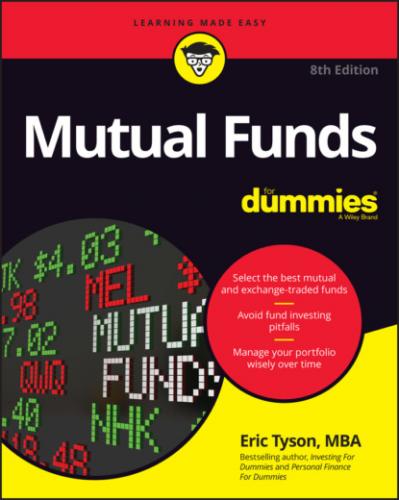Acting Before Researching: The Story of Justine and Max
Justine and Max, both in their 20s, recently married and excited about planning their life together, heard about a free financial-planning seminar taking place at a local hotel. A financial planner taught the seminar. One of his points was, “If you want to retire by the age of 65, you need to save at least 12 percent of your income every year between now and retirement … the longer you wait to start saving, the more painful it’ll be.”
For the couple, the seminar was a wake-up call. On the drive home, they couldn’t stop thinking and talking about their finances and their future. Justine and Max had big plans: They wanted to buy a home, to send the not-yet-born kids to college, and to retire by age 65. And so it was resolved: A serious investment program must begin right away. Tomorrow, they’d fill out two applications for fund companies that the financial planner had distributed to them.
Within a week, they’d set up accounts in five different funds at two firms. No more paltry-return bank savings accounts — the funds they chose had been returning 10 or more percent per year! Unlike most of their 20-something friends who didn’t own funds or understand what funds were, they believed they were well on their way to realizing their dreams.
They completely neglected investing in their employers’ retirement savings plans. They missed out on making tax-deductible contributions. By investing in mutual funds outside of their employers’ plans, they received no tax breaks.
They were steered into funds that didn’t fit their goals. They ended up with bond funds, which were okay funds as far as bond funds go. But bond funds are designed to produce current income, not growth. Justine and Max, looking to a retirement decades away, were trying to save and grow their money, not produce more current income which they didn’t need because they were working and earning money.
To add tax insult to injury, the income generated by their bond funds was fully taxable because the funds were held outside of tax-sheltered retirement accounts. The last thing Justine and Max needed was more taxable income, not because they were rolling in money — neither Justine nor Max had a high salary — but because, as a two-income couple, they already paid significant taxes.
They didn’t adjust their spending habits to allow for their increased savings rate. In their enthusiasm to get serious about their savings, they made this error — probably the biggest one of all. Justine and Max thought they were saving more — 12 percent of their income was going into the funds versus the 5 percent they’d been saving in a bank account. However, as the months rolled by, their outstanding balances on credit cards grew. In fact, when they started to invest in funds, Justine and Max had $1,000 of revolving debt on a credit card at a 14 percent interest rate. Six months later, this debt had grown to $2,000.The extra money for investment had to come from somewhere — and in Justine and Max’s case, some of it was coming from building up their credit card debt. But, because their investments were highly unlikely to return 14 percent per year, Justine and Max were actually losing money in the process.
I tell the story of Justine and Max to caution you against buying funds in haste or out of fear before you have your own financial goals in mind.
Lining Up Your Ducks Before You Invest
Throughout this book, I emphasize that particular mutual funds and exchange-traded funds are specialized tools for specific jobs. I don’t want you to pick up a tool that you don’t know how to use. This section covers the most important financial steps for you to take before you invest so you get the most from your fund investments.
Pay off your consumer debts
Consumer debts include balances on credit cards and auto loans. If you carry these types of debts, please do not invest in funds until these consumer debts are paid off. I realize that investing money may make you feel like you’re making progress; paying off debt, on the other hand, just feels like you’re treading water. Shatter this illusion. Paying credit card interest at 14 or 18 percent while making an investment that generates only an 8 percent return isn’t even treading water; it’s sinking! In the world of investing, a 14 to 18 percent guaranteed return is absolutely fantastic so you should not only do that first but feel great about it!
I go a step further on this issue: Not only should you delay any investing until your consumer debts are paid off, but you should also seriously consider tapping in to any existing savings (presuming you’d still have adequate emergency funds at your disposal) to pay off your debts.
Review your insurance coverage
Saving and investing are psychologically rewarding and make many people feel more secure. But, ironically, even some good savers and investors are in precarious positions because they have major gaps in their insurance coverage. Consider the following questions:
Do you have adequate life insurance to provide for your dependents if you die?
Do you carry long-term disability insurance to replace your income in case a disability prevents you from working?
Do you have comprehensive health insurance coverage to pay for major medical expenses?
Have you purchased sufficient liability protection on your home and car to guard your assets and net worth against lawsuits?
In reviewing your insurance, you may also discover unnecessary policies or ways to spend less on insurance, freeing up more money to invest in funds. See the latest edition of my book Personal Finance For Dummies (Wiley) to discover the best ways to buy insurance and whip your finances into shape.
Figure out your financial goals
Mutual funds and exchange-traded funds are goal-specific tools (see the section “Reaching Your Goals with Funds,”
